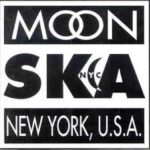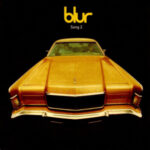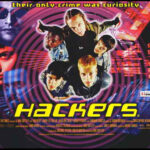 Heard around the world, beyond its modest size, Moon Ska Records banged out the beat that drove American ska’s third wave into mainstream consciousness. Founded in 1983 by Robert “Bucket” Hingley—frontman of The Toasters and staunch underground advocate—the label sprang from necessity: to press and distribute The Toasters’ records when no one else would. Initially named Moon Records as a nod to Sun Records, it soon became Moon Ska Records after a naming conflict, but its mission remained clear: championing ska and ska-inflected sounds by American bands who had been largely ignored by the music industry.
Heard around the world, beyond its modest size, Moon Ska Records banged out the beat that drove American ska’s third wave into mainstream consciousness. Founded in 1983 by Robert “Bucket” Hingley—frontman of The Toasters and staunch underground advocate—the label sprang from necessity: to press and distribute The Toasters’ records when no one else would. Initially named Moon Records as a nod to Sun Records, it soon became Moon Ska Records after a naming conflict, but its mission remained clear: championing ska and ska-inflected sounds by American bands who had been largely ignored by the music industry.
The early 1980s were a transitional period in the world of alternative music. Punk had exploded and fractured, new wave was surging, and reggae was finding increased popularity in urban centers. Ska—especially the British two-tone movement that had emerged in the late ’70s with bands like The Specials and Madness—was carving out its own multicultural niche. In the U.S., a similar underground movement was percolating, and Hingley saw the potential for ska to be something uniquely American. With Moon Ska Records, he planted a flag not only for The Toasters but for a burgeoning scene of young bands from all over the country who shared a love for ska’s infectious rhythm, brass-led melodies, and punk energy.
Operating out of New York City, Moon Ska Records began as a DIY operation with a tiny budget and big ambition. Records were pressed in limited quantities, sold via mail order, at shows, and later through a dedicated retail store. That store, located in Manhattan’s East Village, became a cultural landmark for ska enthusiasts. It was more than a storefront; it was a clubhouse, a ticket exchange, a bulletin board, and a symbol of everything the label stood for—community, authenticity, and unfiltered passion for ska music.
Moon Ska’s artist roster reads like a who’s who of American third-wave ska. The Toasters led the charge, but they were quickly joined by a slew of hungry, road-tested bands. The Slackers, Mephiskapheles, The Scofflaws, Mustard Plug, The Pietasters, Spring Heeled Jack, and Hepcat all found a home at Moon. These bands spanned styles and subgenres, from ska-punk to trad ska to ska-core to jazz-influenced experimentation, and Moon gave them the support and distribution they needed to find an audience. The label also imported British and European ska, further cementing its position as the epicenter of the global ska underground.
Through the late 1980s and into the 1990s, Moon Ska Records grew in reputation and reach. The label’s distinctive logo began appearing in record stores around the country. Moon released compilation albums like “Skarmageddon” and “Moonshot!” that introduced listeners to new bands and served as snapshots of the evolving ska scene. As the decade progressed, ska’s popularity surged. Bands like No Doubt, Reel Big Fish, and The Mighty Mighty Bosstones, who came from the same general scene but were often signed to major labels, found chart success. But while others went mainstream, Moon Ska stayed independent. It continued to support touring bands, underground venues, and do-it-yourself ethics.
During this time, Moon also launched a subsidiary label, Ska Satellite Records, which focused on emerging acts that might not yet be ready for a full Moon release. This allowed for even more flexibility in signing and promoting new talent, without stretching the resources of the main label. Moon Ska became known not just for its music, but for its sense of mission. Its identity was inseparable from the ethos of the scene: inclusivity, independence, and irrepressible energy.
By the mid-1990s, ska had become a legitimate movement in American music, and Moon Ska was at its heart. National tours, all-ska festivals like Skalapalooza, and high-profile showcases kept the label in the public eye. The storefront in New York became a destination for fans visiting the city. Interns and staff worked tirelessly not only on traditional label duties like promotion and distribution, but also in organizing events, answering fan mail, and helping bands book shows. Moon was more than a record label; it was a full-scale cultural engine.
But like many independent labels that ride the wave of a movement, Moon eventually hit turbulence. The very success of ska contributed to market saturation. As the 1990s drew to a close, major labels swooped in to sign ska bands or market hybrid acts with watered-down ska influences. The underground began to splinter. Some bands veered toward punk, others toward pop, and the scene that had once felt like a united front began to dissolve into competing sub-genres and cliques. Moon Ska, committed to its third-wave ska identity, was caught in the crossfire.
Behind the scenes, financial pressures mounted. Distribution deals fell apart. Unsold records were returned en masse, leaving the label holding the bag. Internal issues, including the loss of key employees and conflicts over business decisions, further destabilized operations. Rumors swirled about mismanagement and betrayal, but at its core, Moon Ska’s troubles stemmed from the same vulnerability that affected countless other indie labels: it was built on passion, not profit.
By 2000, the writing was on the wall. The Moon Ska store closed. Staff dwindled. Releases slowed to a trickle. In December of that year, Robert “Bucket” Hingley officially shuttered the label. In a message to fans, he cited the unsustainable costs of running a truly independent label in a market increasingly hostile to small operations. Yet, even in closure, Moon Ska was never seen as a failure. It had accomplished what few indie labels ever do—it defined an era, elevated a genre, and created a legacy that outlived its business.
After Moon Ska’s closure, Hingley continued his mission with the founding of Megalith Records. This new label picked up where Moon left off, supporting many of the same bands and continuing to promote ska in all its forms. Meanwhile, in Europe, a licensed branch called Moon Ska Europe—and later Moon Ska World—carried on the torch, releasing new material and reissuing classics for overseas audiences.
Moon Ska’s impact is still felt deeply today. Many ska fans cite the label as their entry point into the genre. The compilations introduced countless listeners to bands they might never have discovered otherwise. The label’s visual aesthetic—bold, blocky graphics, checkerboard patterns, and iconic logos—helped define what third-wave ska looked like as much as what it sounded like.
More importantly, Moon Ska Records exemplified the spirit of independent music. It was scrappy, self-funded, and fiercely loyal to its artists. It operated with a DIY ethic before that term became a buzzword. It wasn’t just selling records; it was building a community. And that community—of fans, musicians, promoters, and misfits—is what made the label so powerful.
In retrospect, Moon Ska Records was always more than just a business. It was a movement, a lifeline, and for many people, a family. It captured the essence of what makes ska special: unity, energy, resistance, joy. Long after the doors closed and the presses stopped, Moon Ska’s rhythm continues to echo in clubs, basements, festivals, and headphones around the world.
It is impossible to tell the story of American ska without Moon Ska Records. It not only gave bands a platform, but it also gave fans a home. In a music world that often prioritizes trends over substance, Moon Ska stood for something enduring: real music made by real people, for anyone who wanted to dance, shout, and belong.









